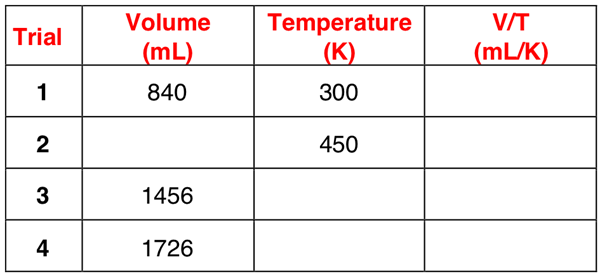The volume of a sample of gas is dependent upon the Kelvin temperature of the gas. Increasing the Kelvin temperature increases the volume. The two quantities are directly proportional to one another. The ratio of Volume/Temperature remains constant. So if you know the V/T ratio for one state of the gas, you can use the ratio to determine the volume of the gas for a different temperature. Similarly, you can find the temperature requied to produce a different volume.
Getting your Trinity Audio player ready...
Hold down the T key for 3 seconds to activate the audio accessibility mode, at which point you can click the K key to pause and resume audio. Useful for the Check Your Understanding and See Answers.
Volume and Temperature - help10
There are four questions in this Question Group. Each question is very similar to one another. The question below is one of the questions.
Version 1:
The pressure of a sealed container of gas is kept constant while the temperature is changed. This results in a change in the volume of the gas sample. Based on this information, complete the table below.